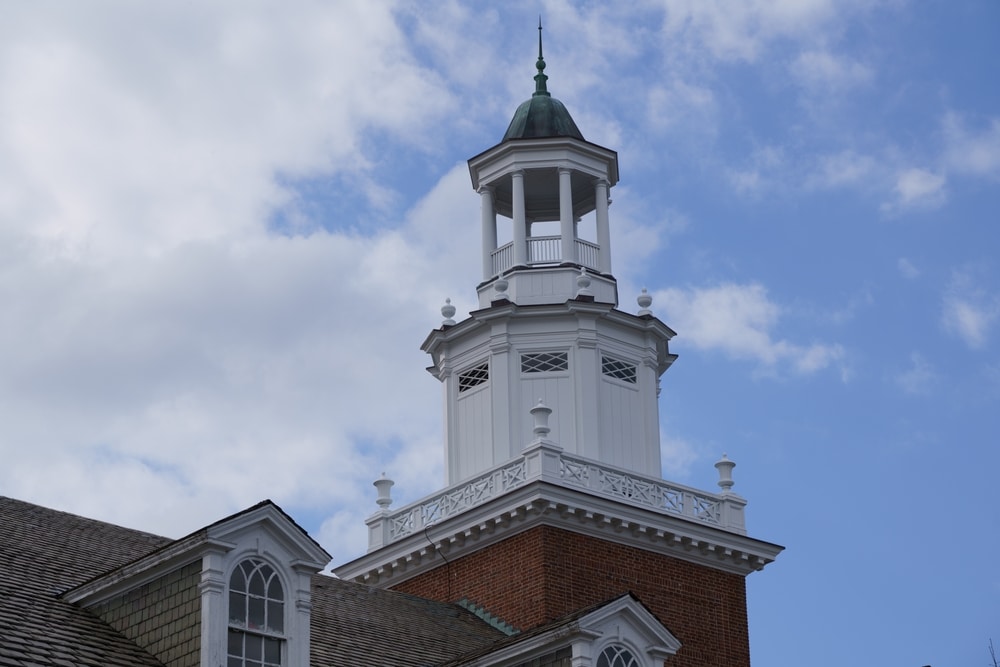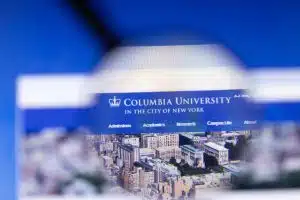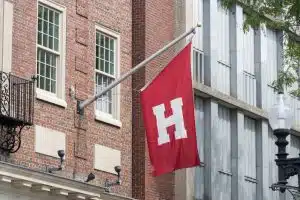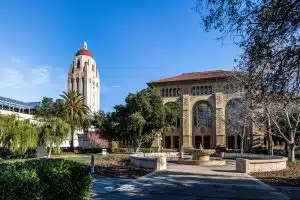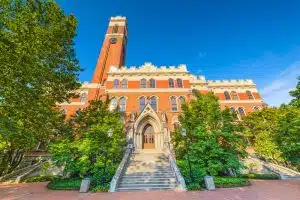Fun Facts About Johns Hopkins University
Located in the heart of Baltimore, Johns Hopkins University is recognized globally for its commitment to education and research. From its founding, the university created a new model for higher education. Over the years, this prestigious institution has attracted an array of aspiring scholars, scientists, and artists from across the world. Let’s dive into some interesting and lesser-known aspects of Johns Hopkins University. Therefore, there are many fun facts about Johns Hopkins University to learn about.
The Founding of Johns Hopkins University
The history of Johns Hopkins University is fascinating and unique. Named after its original benefactor, Johns Hopkins, the university has deep roots stretching back to the 19th century.
The Philanthropist Behind the Name
Johns Hopkins, born in 1795, was a successful businessman and philanthropist. Coming from a modest Quaker family background, Hopkins made a significant fortune, primarily through his investments in the Baltimore and Ohio Railroad. He never married or had children and resolved to use his vast wealth to benefit others.
Driven by his strong belief in the power of education and healthcare to uplift society, Hopkins decided to leave behind a lasting legacy. In his will, he bequeathed $7 million, a most significant philanthropic gift of the time, towards the foundation of a university and hospital. This remarkable act of generosity would forever change the landscape of higher education and medical care.
Johns Hopkins envisioned a place of learning and healing that would push the boundaries of knowledge and innovation. His vision was rooted in the idea that education should be accessible to all, regardless of their social or economic background.
The University’s Early Years
Johns Hopkins University opened its doors in 1876, marking the beginning of a new era in American higher education. Unusually for the time, the university was based on a European model of higher education, focusing on research as well as teaching. This made it unique among American institutions.
From its inception, Johns Hopkins University has been committed to fostering a diverse and inclusive community. It adopted a co-education policy, welcoming scholars from various backgrounds to pursue their intellectual passions. This commitment to diversity made the university a vibrant and multicultural institution, where students and faculty from different walks of life could come together to learn and grow.
The early years of the university were marked by a spirit of exploration and discovery. Faculty members and students alike were encouraged to push the boundaries of knowledge through rigorous research and inquiry. This emphasis on research would become one of the defining characteristics of Johns Hopkins University, setting it apart from other institutions of its time.
As the university grew, so did its reputation for excellence. It attracted some of the brightest minds in academia, who were drawn to the institution’s commitment to intellectual rigor and innovation. This influx of talent further fueled the university’s growth and established it as a center of intellectual and scientific advancement.
Today, Johns Hopkins University continues to build upon its rich history and legacy. It remains dedicated to the pursuit of knowledge, the advancement of research, and the betterment of society. With its strong foundation rooted in the vision of its founder, the university continues to inspire and shape the minds of future generations. Therefore, there are many fun facts about Johns Hopkins University to learn about.
Unique Academic Programs
Over the years, the pioneering spirit of its early days has shaped the nature of Johns Hopkins University’s curriculum and academic offerings.
Johns Hopkins University, founded in 1876, has a rich history of innovation and academic excellence. From its inception, the university has been at the forefront of groundbreaking research and interdisciplinary studies, making it a pioneer in various fields of study.
Pioneering Fields of Study
Inheriting the founder’s forward-thinking spirit, Johns Hopkins University has always sought to push the boundaries of knowledge. The University’s School of Medicine was one of the first to admit women, breaking barriers and paving the way for gender equality in the medical field. It introduced numerous groundbreaking medical courses, revolutionizing the way medicine is taught and practiced.
Johns Hopkins also became a leading force in the field of research, notably creating the first research university in the United States. This groundbreaking approach to education allowed students and faculty to collaborate on innovative projects, leading to groundbreaking discoveries and advancements in various scientific disciplines.
Through its focus on interdisciplinary studies, the university promotes a culture of innovation. Students have the opportunity to explore the intersection of different fields, fostering creativity and critical thinking. Johns Hopkins is known for its stellar programs in bioengineering, where students combine principles of engineering and biology to develop cutting-edge medical technologies. The university’s global health program equips students with the knowledge and skills to address global health challenges, while its international studies program offers a comprehensive understanding of global affairs and prepares students for careers in diplomacy, international relations, and more.
Noteworthy Faculty Members
Johns Hopkins faculty has included several Nobel laureates, Pulitzer Prize winners, and other significant scholars. These esteemed individuals bring a wealth of knowledge and expertise to the university, enriching the academic experience for students.
One notable faculty member is Riccardo Giacconi, who won the Nobel Prize for Physics for his pioneering work in X-ray astronomy. His groundbreaking discoveries revolutionized our understanding of the universe and opened up new possibilities for space exploration.
Another distinguished faculty member is author Alice McDermott, who won the National Book Award for her exceptional literary contributions. Her insightful storytelling and thought-provoking narratives inspire students to explore the power of language and literature.
The faculty at Johns Hopkins not only pushes the boundaries of knowledge but also shapes and inspires the leaders of tomorrow. Their mentorship and guidance empower students to think critically, challenge conventional wisdom, and make a positive impact on the world.
Campus Life and Traditions
Life on campus at Johns Hopkins University is rich in traditions and engaging activities. Students at Johns Hopkins engage in a variety of extracurricular activities, including over 400 clubs and organizations. From athletics to performing arts, the university encourages its students to explore interests beyond their academic coursework. One of the more notable fun facts about Johns Hopkins University is that it currently holds the ninth spot on the list of national universities.
One of the most exciting aspects of campus life at Johns Hopkins is the annual Spring Fair. This event is the largest student-run festival in the country and brings together students, faculty, and the wider Baltimore community for a weekend of fun and celebration. The fair features a wide array of activities, including delicious food from local vendors, thrilling games, and live music performances that showcase the incredible talent within the university.
But the campus experience at Johns Hopkins is not just about the events and activities. It is also about the iconic landmarks that make the university unique. One such landmark is the George Peabody Library, known for its stunning atrium and cast-iron balconies. This architectural gem is not only a place for studying and research but also a beloved spot for students to immerse themselves in the beauty of their surroundings.
Another notable landmark worth mentioning is the Homewood House, a museum that showcases early 19th-century life. This historic building provides a glimpse into the past and allows students to connect with the rich history of the university and the surrounding community.
However, it’s not just the buildings that contribute to the charm of the campus. The beautifully landscaped spaces also play a significant role in creating a welcoming environment. One such space is the “Beach,” a large open grassy area commonly used for study and relaxation. This serene spot offers students a peaceful retreat where they can unwind, socialize, or simply enjoy the beauty of nature.
With its vibrant student life, iconic landmarks, and picturesque campus, Johns Hopkins University offers a truly immersive and enriching experience for all who step foot on its grounds. Whether it’s participating in student organizations, attending the Spring Fair, or simply finding solace in the beauty of the campus, students at Johns Hopkins are sure to create lasting memories and forge lifelong connections.
Notable Alumni and Achievements
The impact of Johns Hopkins University is evident from its alumni’s contributions to science, arts, and society.
Johns Hopkins University has a long and impressive list of notable alumni who have made significant contributions to various fields. One such distinguished graduate is Woodrow Wilson, the 28th president of the United States. Wilson’s leadership and vision played a crucial role in shaping the nation during a critical period in history.
Another influential alumna is Rachel Carson, an environmental scientist whose groundbreaking book, “Silent Spring,” raised awareness about the harmful effects of pesticides on the environment. Carson’s work sparked a global movement for environmental conservation and inspired countless individuals to take action.
In addition to Wilson and Carson, Johns Hopkins University can proudly claim Madeleine Albright as one of its notable alumni. Albright made history as the first female Secretary of State, serving under President Bill Clinton. Her diplomatic skills and commitment to international relations have left a lasting impact on the world stage.
These individuals, along with many others, are shining examples of the proactive and progressive spirit of the Johns Hopkins community. As with most universities, it is one of the fun facts about Johns Hopkins University that the students and alumni here take pride in their school.
Groundbreaking Research and Discoveries
Johns Hopkins University has been a hub for groundbreaking research and discoveries that have revolutionized various fields.
One of the most significant contributions to science from Johns Hopkins is the discovery of restriction enzymes. This breakthrough in molecular biology paved the way for genetic engineering and has had a profound impact on fields such as medicine, agriculture, and forensics.
Moreover, the university’s pioneering work in the field of medicine is exemplified by the development of the blue baby operation. This life-saving surgical procedure, first performed at Johns Hopkins, revolutionized the treatment of infants born with congenital heart defects, giving hope to countless families around the world.
Johns Hopkins University has also played a crucial role in addressing global challenges, such as access to clean water. The university’s researchers have developed innovative water purification methods that have improved the lives of millions of people worldwide, particularly in areas affected by water scarcity.
Today, Johns Hopkins University continues to lead in fields like medical research, bioengineering, and public health. Its commitment to innovation and excellence has resulted in countless advancements that contribute to the betterment of our society and the world.
The University’s Impact on Baltimore
Johns Hopkins University has played a significant role in shaping Baltimore, beyond its position as an academic institution.
Founded in 1876, Johns Hopkins University has a rich history that intertwines with the growth and development of Baltimore. From its humble beginnings as a small medical school, the university has grown into a world-renowned institution that has left an indelible mark on the city.
Community Outreach Initiatives
The university actively fosters a sense of community beyond its campus limits. Through its diverse outreach programs, it benefits local schools, community centers, and health facilities. Initiatives such as the Johns Hopkins Urban Health Institute and SOURCE (Student Outreach Resource Center) reflect a commitment to the welfare of its surrounding communities.
One of the notable community outreach programs is the Baltimore Scholars Program, which provides full-tuition scholarships to talented students from Baltimore City public high schools. This initiative not only helps deserving students achieve their educational goals but also strengthens the bond between the university and the local community.
Furthermore, the university’s commitment to community engagement extends to its faculty and staff. Many of them actively participate in volunteer programs, mentoring students, and providing expertise to local organizations. This collaborative approach creates a positive ripple effect that benefits the entire city.
Economic Influence in the Region
As one of Baltimore’s top employers, Johns Hopkins University contributes significantly to the regional economy. It has generated jobs, investment, and development in the city.
The university’s impact on the economy goes beyond direct employment. It attracts talented individuals from around the world, who not only contribute to the university but also become part of the vibrant fabric of Baltimore. These individuals bring with them diverse skills, experiences, and perspectives that enrich the local workforce and foster innovation.
Moreover, the university’s research and development activities have led to numerous spin-off companies and startups, further bolstering the economic landscape of Baltimore. These entrepreneurial ventures not only create jobs but also contribute to the city’s reputation as a hub for innovation and technology.
Through all its contributions – be it academic, societal, or economic – Johns Hopkins University continues to uphold the visionary ideals of its founder. Its commitment to excellence, community engagement, and economic growth has made it an integral part of Baltimore’s identity.
These fun facts give only a glimpse of what makes this prestigious institution unique and remarkable. From its world-class medical facilities to its groundbreaking research, Johns Hopkins University continues to shape not only Baltimore but also the world at large.



